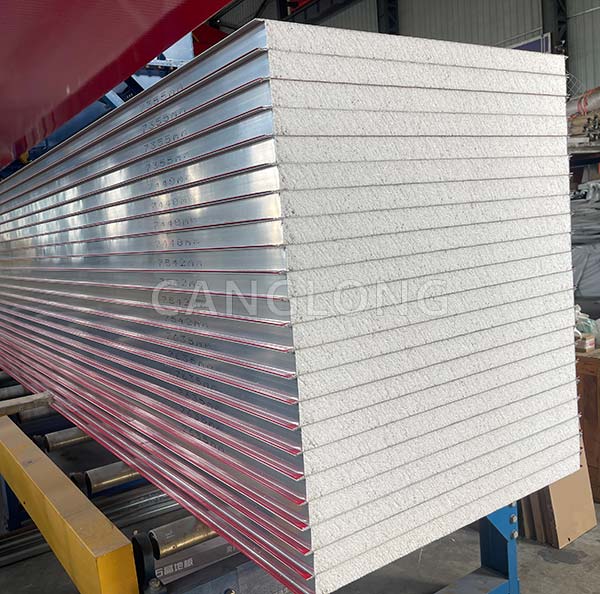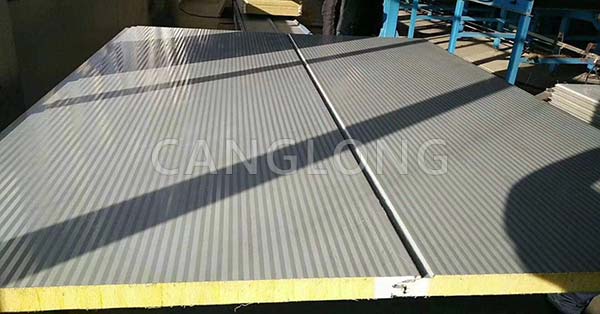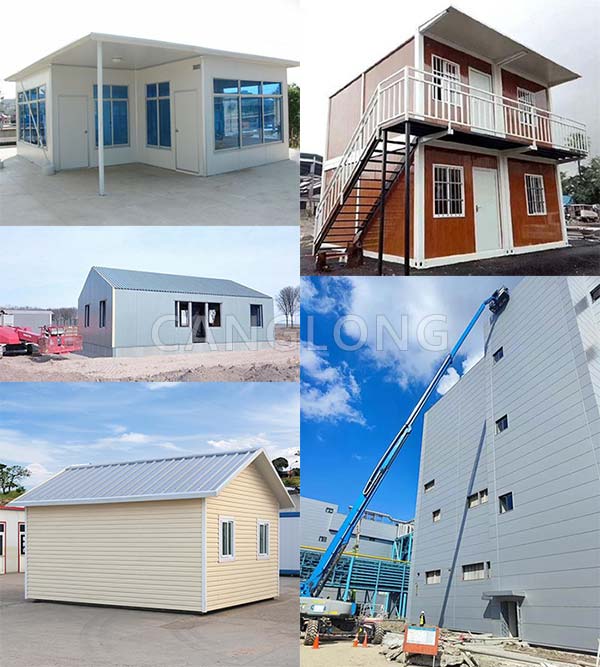Can steel sandwich panel construction solve the global housing crisis?
The world is facing a silent housing disaster: UN data indicates that by 2030, one billion new homes will be needed worldwide, yet only approximately 50 million are currently being delivered annually. In regions like Sub-Saharan Africa and South Asia, over one billion people live in makeshift shacks. Frequent disasters have displaced tens of millions more. Traditional construction methods, with their slow construction times, high costs, heavy pollution, and weak disaster resistance, are no longer able to meet demand. However, a seemingly simple combination of building materials, steel sandwich panel construction, offers a key solution with its speed, economy, and stability.

I. Four Difficulties of Housing Shortage
To determine whether steel sandwich panel construction can solve the problem, we must first examine the root causes of the crisis:
- Slow Construction: Traditional brick or concrete construction takes three to six months for a single house and years for a large community, far outpacing population growth. High Cost: Labor accounts for over 40% of the labor (even higher in developing countries), and material transportation losses are significant, making it unaffordable for low-income groups.
- Low Disaster Resistance: Simple houses are often made of mud bricks and thatch, and can collapse in heavy rain or strong earthquakes. While concrete buildings are sturdy, they are complex to construct and inefficient for post-disaster reconstruction.
- Unsustainable: Clay brick mining destroys arable land, and cement production contributes to 8% of global CO₂ emissions, running counter to environmental goals.
II. Four Key Advantages of Steel Sandwich Panels
1. Fast: From factory to move-in time in just a few weeks
The core advantage of steel sandwich panel is prefabrication. Walls, roofs, and partitions are cut and formed according to the design in the factory, requiring only bolting on-site. For example, a 200 square meter single-story house:
- Traditional construction: 3-4 months (including wall masonry, plastering, and finishing).
- Steel sandwich panel construction: 7-15 days (10 days for factory production, 5 days for on-site assembly).
During the post-typhoon reconstruction efforts in the Philippines, temporary housing using steel sandwich panel was completed for 100 households within 72 hours. A low-income community project in Kenya used this technology to reduce the construction time for a single household from six months to three weeks.
2. Cost Savings: Overall Cost Reduction of 30%-50%
The cost advantage comes from three aspects:
- Material Savings: Steel sandwich panels are primarily composed of steel and core materials (such as rock wool and polyurethane), eliminating the need for large amounts of cement, sand, and gravel. Raw material costs are 20% lower than traditional wall construction.
- Labor Savings: Only on-site installers are required, eliminating the need for tilers or plasterers, resulting in a 40% reduction in labor costs.
- Waste Savings: Factory prefabrication with an error of less than 2mm and on-site scrap rate less than 1%, compared to 10%-15% for traditional construction.
In Indonesia’s low-cost housing program, the cost of a single steel sandwich panel unit was reduced from US$12,000 to US$7,500, enabling 100,000 low-income families to move in earlier.

3. Stability: Disaster Resistance Outperforms Traditional Buildings
The sandwich structure of steel sandwich panel is inherently durable:
- Wind Resistance: 0.6mm galvanized steel sheets and a 100mm rock wool core provide an overall wind resistance rating of over 12, compared to only 8 for traditional brick houses.
- Seismic Resistance: The steel structure’s toughness allows it to absorb seismic energy. During the 7.2 magnitude earthquake in the Philippines, no steel sandwich panel buildings collapsed, while surrounding brick buildings suffered damage of over 60%.
- Fire Resistance: The rock wool/polyurethane core is a Class A non-combustible material, preventing fire from spreading within three hours, while traditional wooden structures catch fire in just five minutes.
The United Nations High Commissioner for Refugees (UNHCR) has designated steel sandwich panels as the preferred building material for emergency shelters, including temporary shelters in conflict zones such as Syria and Yemen.
4. Durability: Lower lifecycle costs, increasing value with use
The durability of steel sandwich panel is often underestimated:
- Long Lifespan: After anti-corrosion treatment, galvanized steel sheets have a design lifespan of over 50 years, compared to approximately 30 years for traditional brick houses. Low Maintenance: No wall cracks or water seepage, requiring only daily cleaning, with annual maintenance costs 70% lower than brick buildings.
- Upgradeable: The core material can be removed and replaced later, such as with aerogel, a more insulating material. This can also be used to expand the space, add rooms, or install photovoltaic panels, extending the building’s lifespan.
III. Controversy and Challenges
Some question whether steel sandwich panels are just a temporary solution. In fact, their limitations are rapidly being overcome:
- Insulation Improvement: The new vacuum insulation panel (VIP) core material has a thermal conductivity as low as 0.002 W/(m·K), outperforming traditional brick walls by three times.
- Aesthetic Enhancement: Color-coated steel plates and wood grain transfer technology create an appearance similar to traditional buildings.
- Localized Production: China, India, and other countries have established steel sandwich panel production lines, reducing transportation costs.

Conclusion
The global housing crisis requires not a perfect solution, but tools that are immediately usable, widely applicable, and effective over the long term. Steel sandwich panel construction is rewriting the rules with its four key advantages: fast construction, cost-effectiveness, disaster resistance, and durability. It doesn’t replace all buildings, but rather offers a practical path forward in emergency relocation, low-cost housing, and post-disaster reconstruction.
For customers, choosing steel sandwich panel isn’t just a business decision; it’s a responsibility to contribute to solving global challenges. A single panel may not end the housing crisis, but it can help millions of families gain access to shelter sooner.
